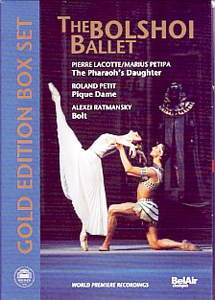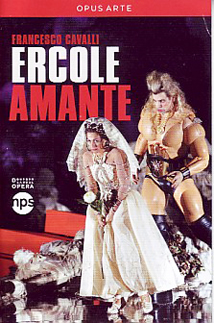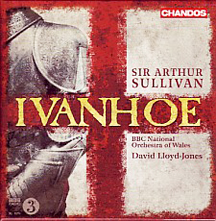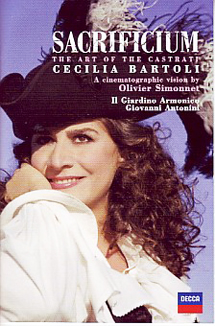Recent releases of great interest to all sorts of taste
By Frank Behrens
ART TIMES online April 2010
ORCHESTRAL AND SOLO
HOROWITZ IN BERLIN It was May 18, 1986 and music lovers in Berlin were going wild. Master pianist Vladimir Horowitz was returning to the city in which his career got started to give what Sony Classics calls “The Legendary Berlin Concert 1986.” It is to be heard, after the tapes lay lost for all these years, on a 2-CD set, complete with a 36-page booklet containing lots of background information and pictures of and concerning the event.
One does not comment on the performance of an artist like Horowitz. I will simply report that he plays three sonatas by Scarlatti, Schumann’s “Kreisleriana,” Liszt’s “Valse caprice d’apres Schubert” and “Sonetto del Petraca No. 104,” two Rachmaninoff “Preludes,” a Chopin “Polonaise” and two “Mazurkas,” and three encores.
I can forgive the short playing time of each CD (48:18 and 42:38 minutes), simply because that was the length of the concert! Students and lovers of keyboard music must have this Sony Classics set.
1930s REVISITED One of my favorite CD series, The Golden Age of Light Music on the Guild Light Music label, has added its 63rd release. To be placed on the shelf next to “The 1930s” and “In Town Tonight: The 1930s Volume 2,” “The 1930s Revisited” holds yet another treasure chest of instrumental music composed between the late 1920s and 1939.
Taken from an enormous collection of original recordings on LP, this program is comprised mostly of short pieces not very well known in America—except for some Jerome Kern and Irving Berlin melodies—and probably not too familiar to the young British today. Among them are “Forest idyll,” “Dancing tambourine,” “Swamp Fire,” and “Fata morgana.”
One must recall that these are some of the tunes that helped the British get through the Depression Years, when record sales plummeted and people turned to the radio for comfort. As are all the other Guild collections, this is certainly something one will want to play many times.
BRAHMS It has been some time since I viewed my last entry in the EuroArts series of DVDs titled “Discovering Masterpieces of Classical Music.” The format is fixed: a 25-minute documentary on the composer concerned, his times and the work featured on the disc.
I was utterly fascinated by the recent “Johannes Brahms: Violin Concerto (1878).” The narration is shared by Brahms expert Wolfgang Sandberger and violinist Gil Shaham. (There are English subtitles when Sandberger speaks in German.) They point out all that was new in this work that came at the time when many thought that only the tone poems such as those of Liszt and the operas of Wagner were the future of music.
I will not spoil the story for those who do not know it and leave it to the viewer to learn what there was about the Violin Concerto that had many critics deride it and some hail it as something new and wonderful in the world of music.
The rest of the disc is devoted to a full performance of the work with Shaham playing with the Berlin Philharmonic under Claudio Abbado. This concert was given in 2002 at the Teatro Massimo, Palermo.
Grab this one and then get all the others in this fine series.
BALLET
Bolshoi Ballet Triumphs in DVD Collection
 |
BOLSHOI BALLET To many, Bolshoi and Ballet are synonymous. A good case might be made for that relationship by the BelAir boxed set of 3 DVDs titled “The Bolshoi Ballet.” Three performances are captured on these discs, along with bonus interviews and backstage peeks at the productions.
I was disappointed only in Roland Petit’s choreography for “La Dame de Pique” (The Queen of Spades). Using only a somewhat rearranged version of Tchaikovsky’s “Symphony No. 6,” this production tells the tale of the solider Hermann (Nikolay Tsiskaridze), who is obsessed with finding the winning combination for a card game that is known only to an ancient Countess (Ilze Liepa). The story is familiar to those who know the opera or the novella; but unless one reads a synopsis, it is impossible to follow the story from the minimal hints provided by the staging.
Again, during the third movement of the symphony, played just before the climax, the chorus is practically doing a hoedown that is much out of synch with the period and feeling of this ghost story. The two leads, however, make up for much of the production’s deficiencies.
On the same disc is a work called “Passacaglia,” set to music by Anton Webern, which is pure dance and tells no story at all.
“Bolt,” composed by Shostakovich, is a satire about sabotage at the Soviet factory—just about the worse sin possible under Stalin’s regime back in 1931. The music and the choreography of Alexei Ratmansky includes classical and 30s styles and is quite funny in many parts, and impressive (especially the Red Army sequence) in its tongue-in-cheek patriotism. (Where else does one find characters named Fart and Corkscrew?)
The featured dancers here are Anastasia Yatsenko, Andrei Merkuriev, Denis Savin, and Morikhiro Iwata.
“The Pharaoh’s Daughter” is a revival of an 1862 ballet with music by Cesare Pugni. With just enough story to justify the original 3 hours or more—here cut down by half—this work is about an English explorer in Egypt, who goes back in time to have a love affair with the title character. Of course, most of the work is taken up by totally undramatic dances; but that is what ballet was all about down through the years.
The scenery and costumes are gorgeous and choreographer Pierre Lacotte tries to reproduce as much of the original movements created by Marius Petipa. Stars Svetlana Zakharova and Serguei Filin, along with a strong secondary cast, make one forget the silliness of the story.
OPERA
Cavalli Opera Has Modern Touches
 |
ERCOLE AMANTE It was 1659, Louis XIV of France was to marry Marie-Therese, and Cardinal Mazarin invited Francesco Cavalli to compose an opera in honor of the event. The result, “Ercole amante” [Hercules in Love],or a modern staging of it can be seen on an Opus Arte DVD, which holds a 2009 production from Het Musiektheater Amsterdam, conducted by Ivor Bolton.
This opera is of great historical interest, standing as it does between the first “fabula con musica” (as opera was called when it was invented just about 1600) and the opera seria, which catered more to the star singers than to the drama.
The framework is the royal wedding, while the rest of the opera tells the story of how Hercules (Luca Pisaroni) wants the captive princess Iole (Veronica Cangemi), despite the devotion of his wife Deianira (Anna Maria Panzarella) and the intervention of the goddesses Juno (Anna Bonitatibus) and Venus (Wike de Brummelstroete). I watched most of Act I, found I was unable to follow what was going on, switched to the 10-minute illustrated synopsis, found I understood about 1/4 of the plot, and settled back to enjoy the music and production on their own merits.
Classicists and drama majors will instantly recognize that the plot was inspired by Euripides’ “Hercules Enraged.”
The director hedged his bets. In one of those unimaginative bonus features, we are told that although “Ercole amante” is a tragic opera, it still has its humorous moments. Of course, there is some intended comic relief built into the libretto. But the director decided to make Hercules into a clown—this, despite the fact that he is supposed to represent Louis XIV! So authenticity is blown to the winds right there.
For the most part, the costumes and scenery are those that might have been seen back in 1662, when it finally reached the stage. But the director thought it would be hysterically funny to show Hercules with two over-sized 6-packs of Budweiser, another character with a modern backpack, and other anachronisms that are just silly if not stupid. Worse still, the choreography (as is the case with at least two productions of Rameau operas) is strictly of the mid-20th-century frug, twist, and sudden muscle contortion sort that is as un-baroque as can be.
The dance of the mummies, while a little too modern, does have a creepy effect as the gauzy dancers totter to the music.
When Hercules first appears, he steps into high platform boots, a long blond wig, and a plastic muscle shell, all of which make him look exactly like a particular rock star and/or a wrestler from half a century back. Here, the character is sung by a bass-baritone who finds some of the low notes below his range and who can do little acting while locked in that costume (which, he tells in an interview, was like a sauna).
The opera runs just over three hours, the bonus material just over an hour. The picture is in wide-screen format, and the subtitles are in six languages.
“Beggar’s Opera” Still Has Meaning Today
BEGGAR’S OPERA In 1728, the grand operas of Handel were all the rage. The absurd plots centered around mythological or legendary beings, all embroiled in extremely complicated amorous intrigues, and the audiences paid attention only to the great arias and choruses. All the while, the British government was as corrupt as ever and Horace Walpole was its leader.
And so playwright John Gay decided to attack the latter with an “opera” populated by the lowest strata of British society to show clearly how their petty crimes were nothing when compared with those of high government officials. Titled “The Beggar’s Opera,” the music was based on popular tunes of the day—amusingly enough, some from Handel’s own operas—and the lyrics were changed to fit the plot. The show broke all past attendance records and set the formula for Gilbert and Sullivan and arguably the Broadway musical.
There is a complete version from British television available on DVD, but it is not very appealing. But now, as part of the great Warner Bros. Archive Collection, the 1953 film version is now available.
Laurence Olivier swaggers though his role as MacHeath, who is leading both Polly Peacham (Dorothy Tutin) and Lucy Lockit (Daphne Anderson) up the garden (but never the bridal) path. This displeases Mr. Peacham (George Devine), who happily hands MacHeath over to the authorities.
The framing device of all this takes place in a prison where MacHeath is awaiting hanging and a beggar is composing an opera about these current events. It is all very witty and a touch surreal. And the political parallels still hold today!
Now this film itself has undergone considerable editing from the original. About half of the songs have been cut and the remaining music has been adapted by conductor Arthur Bliss. Playwright Christopher Fry was brought in to add some dialogue and lyrics—why can’t film makers trust the original authors?—which might annoy some scholars who know the original very well.
(Olivier sings for himself, while other characters have professional voices dubbed in.)
The running time is 94 minutes and restored picture and sound are very clear. Note: like all DVDs in the Archive series, the disc will play only on standard playback-only equipment, not on PCs.
Sullivan’s “Ivanhoe” Poses Some Questions
 |
Being a Gilbert and Sullivan addict, I am equally interested in Sullivan without Gilbert—and especially in Sullivan’s only completed grand opera, “Ivanhoe.” At last, an acceptable complete recording is available on three Chandos CDs with David Lloyd-Jones conducting soloists and the BBC National Orchestra of Wales.
Opinion on this opera is varied. There is Sullivan’s own diary entry that “a cobbler should stick to his last” as a starting point. He dreamed all his life of creating an English school of opera, but he was too successful in light opera to take the chance. As the legend goes, Queen Victoria herself suggested upon knighting Sullivan that he turn to more serious endeavors. Sullivan and Gilbert’s producer Richard D’Oyly Carte offered to erect a lavish opera house for whatever work Sullivan chose. Gilbert was given first refusal as librettist, and Sullivan settled for a not very good libretto by one Julian Sturgis.
Many characters in the novel are missing; but the libretto pretty much follows the original in a highly abridged but adequate form.
The booklet accompanying the CDs gives an excellent account of the rest of the background and a good analysis of the positive aspects of the score. It does not dwell upon the negative comments of the critics in 1891, many of which can be found on the Gilbert & Sullivan Archive website.
I found much of the chorus work exciting if not quite original, one or two sequences straight out of “Lohengrin” and “Tannhauser” both dramatically and musically, and most of the arias for the female leads quite beautiful but not quite memorable. Perhaps Sullivan lacked the inspiration Gilbert’s lyrics might have given him. Who can guess?
The cast is a strong one, most singing with good enunciation (final consonants hit squarely); but the enclosed libretto is still needed. Among the vocalists are Toby Spence (Ivanhoe), James Rutherford (Brian), Janice Watson (Rowena), and Geraldine McGreevy (Rebecca).
The running time is 165 minutes, and each CD side holds a complete act.
Bartoli is Stunning in Castrati Arias
 |
SACRIFICIUM Possibly a CD and companion DVD titled “Sacrificium: The Art of the Castrati” might be a bit off-putting to anyone knowledgeable about the old cruel practice of castrating thousands of young Italian boys each year in the hope that a mere few of them would retain their beautiful prepubescent voices for singing in church and later on in opera.
I have just viewed the DVD version with Cecilia Bartoli singing arias composed for castrati—and it is a stunner! The producers of this filmed concert chose the Palace of Caserta in Southern Italy as the setting for the soprano and the instrumental group called Il Giardino Armonico, conducted by Giovanni Antonini.
Bartoli, dressed as a gentleman of the period, sings 10 selections by composers of the 18th- and 19th-centuries: Nicola Porpora, Geminiano Giacomelli, Francesco Araia, Riccardo Broschi, and George Frideric Handel. As usual with this star, “sings” is too weak a verb. She puts her heart and soul into each piece, far more than did the castrati, I would wager, and produces vocal displays that are nearly unbelievable.
In a short bonus feature, she explains that the castrati were able to handle with little effort coloratura passages that lasted for over 50 bars of music. She seems to do the same with equal ease. Balancing fast paced arias with slower ones, she assures the viewer that the program will never grow monotonous—as is not the case with some of the long operas from which these selections have been chosen. In fact, she literally leaps into place to launch one of the faster ones and holds the viewer spellbound.
The running time of the concert itself is only 60 minutes, but they leave one breathless. The bonus materials add only 22 minutes to the complete program. If one must choose between the CD and the DVD, I would certainly recommend the latter.
REFERENCE
GRAMOPHONE GUIDE Once a year in my otherwise uneventful life, I look forward to the annual issue of “The Gramophone Classical Music Guide.” Considerable changes have been wrought upon the 2010 edition, as may be seen by the subtitle “The most authoritative guide to the best classical recordings written by the world’s leading critics [so far, nothing new] CD DVD Download.” There is also a round sticker on the front cover announcing “Over 400 new fully revised recommendations.”
What with the flood of new classical recordings on CDs and DVDs—and what with the addition of the download format—I can sympathize with the nine editors, managers and the publisher who had to decide what to drop, keep, and add. Important new recordings were obvious additions, while much had to go. The Gilbert and Sullivan listings, for instance, are much abridged from the previous editions, as are the works of other composers whose listings I checked. But this is why I keep all the older editions, since so many of the recordings dropped in recent issues of the Guide have been reissued at lower prices by whoever owns the copyrights at the moment.
The format is still friendly. After 35 pages of general and specialized information, there are 1310 pages of over 3000 reviews organized by composers from Abel to Zemlinksy; 51 pages of reviews of collections organized by conductors, instrumentalists, ensembles, and singers; an index of composers and an index of artists. So if you are interested in (say) any recording with Thomas Beecham conducting, you can easily find the 23 pages that mention him!
At the beginning of each composer’s entry, a short biography is included to orient the reader as to time, country, and kind of music associated with that composer.
I am hoping for the day when DVDs will get their own guide; but I suspect it is not yet cost-wise to do so.
So careful collectors of the classical catalogue will find this Gramophone Guide just the ticket to avoid the unworthy and to concentrate on the best recordings available—assuming that the critics know what they are about.
